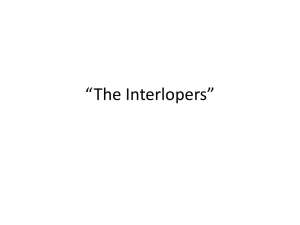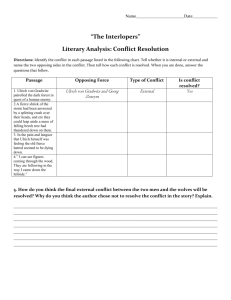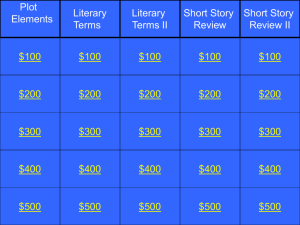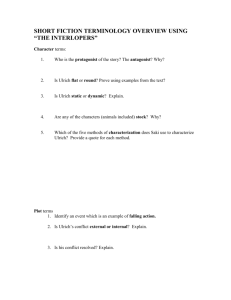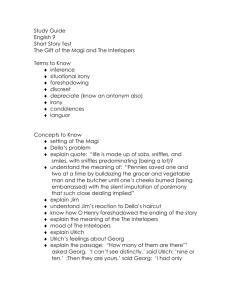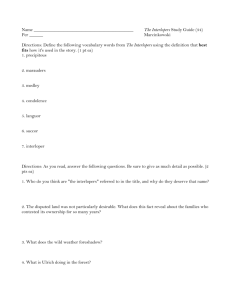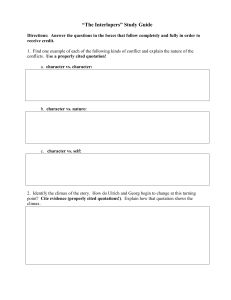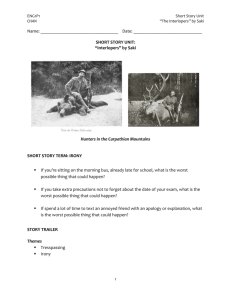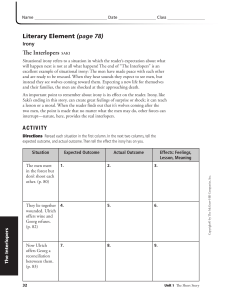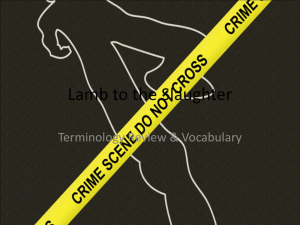"The Interlopers" Analysis Worksheet
advertisement
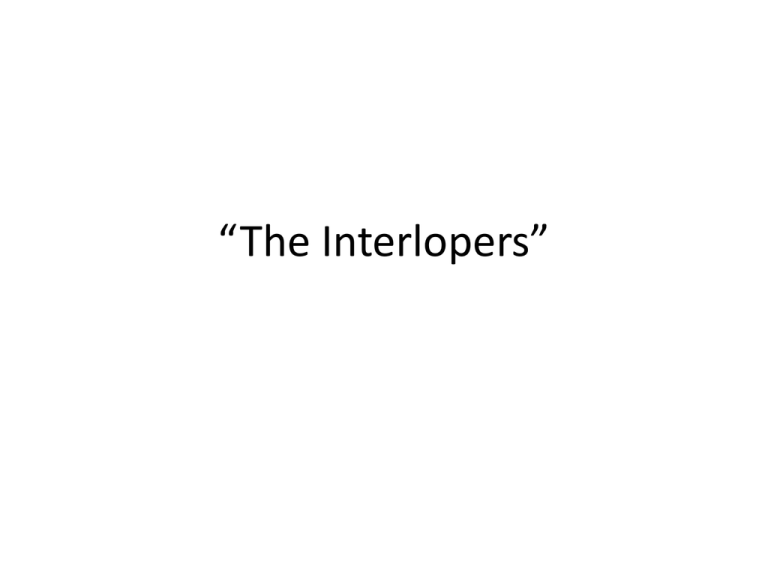
“The Interlopers” Plot Term Title Characters Setting External conflict Internal conflict Main events Climax Resolution “The Interlopers Causes and Effects Causes Effects Irony Types of Irony Verbal Irony Situational Irony Dramatic Irony Examples from “The Interlopers” Analyze the conflict in one well-written paragraph. Student example: _______________________________________ _______________________________________ _______________________________________ _______________________________________ _______________________________________ Teacher reteach: The main conflict, Ulrich's and Georg's hatred for one another, puts them in a bind. Their misfortune causes them to realize their foolishness. The approaching wolves don't care. Evaluate what effect the setting has on the characters and on the mood of the story. Student example: _______________________________________ _______________________________________ _______________________________________ _______________________________________ _______________________________________ Teacher reteach: The harsh setting reflects the harsh feelings of the two men. It forces each man's character change and each man's impending doom. Omniscient Narrator Tone—the writer’s attitude toward a subject or character—is affected by the choice of narrator. Through the use of an omniscient narrator, Saki creates a respect for what? For what does this narrator express contempt? What was the author’s purpose in writing this story (what did Saki want to show us)? How would have making the narrator focus on either Ulrich or Georg have distorted the author’s purpose? Moral In a “Double Cheeseburger” paragraph, write about the moral—the lesson readers should have learned—of “The Interlopers.”
